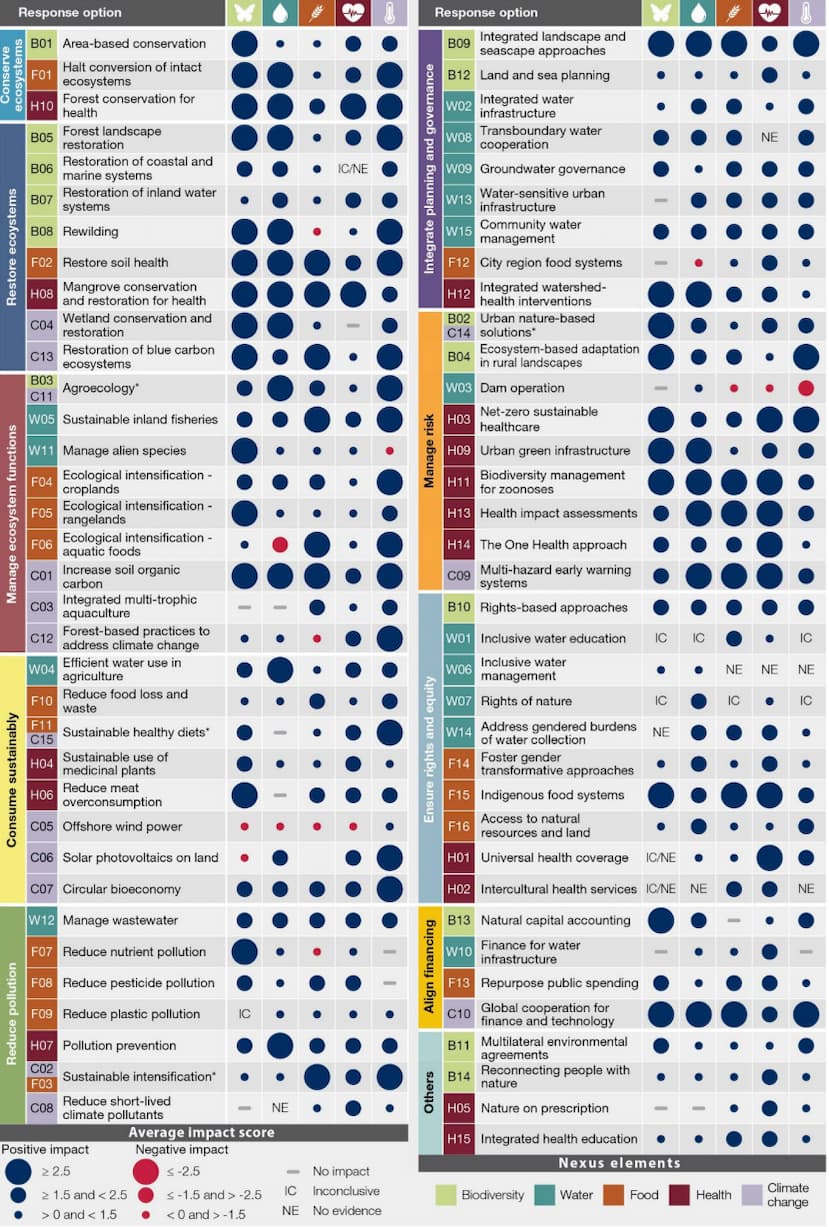Report on Vietnam’s Enhanced Vehicle Emission Controls for Sustainable Urban Development
Introduction: Aligning Urban Policy with Global Sustainability Goals
In a significant move to advance its commitment to the Sustainable Development Goals (SDGs), the government of Vietnam is implementing comprehensive new measures to combat severe urban air pollution. These policies, focused on Hanoi and Ho Chi Minh City, directly address SDG 3 (Good Health and Well-being) by mitigating public health risks from poor air quality, and SDG 11 (Sustainable Cities and Communities) by creating healthier and more resilient urban environments. Furthermore, the initiative supports SDG 13 (Climate Action) by curbing emissions from fossil fuel-powered vehicles.
Hanoi’s Accelerated Plan for Low-Emission Zones (LEZs)
To safeguard public health (SDG 3) and improve urban livability (SDG 11), Hanoi’s administration has accelerated its plan to establish Low-Emission Zones (LEZs), moving the start date five years earlier to 2026. The implementation is structured in a phased approach to progressively expand the zones of improved air quality.
LEZ Implementation Schedule
- Phase 1 (July 2026): The initial LEZ will be established in the downtown area, covering the region within the first ring road.
- Phase 2 (2028): The restricted area will be expanded to encompass the territory within the second ring road.
- Phase 3 (2030): The LEZ will extend to the third ring road, covering a significant portion of the urban core.
Operational Framework and Vehicle Restrictions
From 2031, the designation of LEZs will be mandatory for areas meeting specific criteria, further embedding sustainability into urban planning. The framework is designed to restrict the most polluting vehicles, thereby reducing harmful emissions and promoting a transition towards cleaner transport options in line with SDG 7 (Affordable and Clean Energy) and SDG 11.
- Criteria for LEZ Designation:
- Densely populated inner-city areas
- Locations with chronic traffic congestion
- Zones identified with poor air quality
- Vehicle Restrictions:
- A ban will be imposed on diesel trucks, fossil fuel-powered motorbikes, and light motorcycles.
- Vehicles that do not meet Euro-4 emission standards will be subject to curfews or speed limits.
- Additional charges will be applied to high-emission vehicles to discourage their entry into the zones.
Stricter National Emission Standards for New Vehicles
The central government is reinforcing these urban initiatives with stricter nationwide controls on vehicle manufacturing. This policy directly contributes to SDG 13 (Climate Action) by setting clear targets for reducing carbon emissions from the transport sector. A new five-level framework for CO₂ emissions from internal combustion engines has been established.
Emission Standard Levels
- Level 1: 4.5% CO₂ cap
- Level 2: 3.5% CO₂ cap
- Level 3: 3.0% CO₂ cap
- Level 4: 0.5% CO₂ cap
- Level 5: 0.3% CO₂ cap
Phased Rollout with Urban Priority
The implementation timeline prioritizes Vietnam’s largest urban centers, where air pollution poses the most immediate threat to public health and sustainable development.
- Hanoi & Ho Chi Minh City: All cars manufactured in these cities must comply with Level 4 standards by 2027. Vehicles produced since 2017 must first meet Level 3 by the end of 2026.
- Nationwide: Cars manufactured after 2022 must meet Level 4 by 2026 and Level 5 by 2030, demonstrating a clear roadmap towards cleaner vehicle technology across the country.
These targeted measures underscore a strategic approach to environmental management, focusing resources on areas most affected by pollution to achieve the targets set by SDG 11 for safe and sustainable cities.
Analysis of Sustainable Development Goals in the Article
1. Which SDGs are addressed or connected to the issues highlighted in the article?
The article on Vietnam’s new measures to curb urban air pollution addresses several Sustainable Development Goals (SDGs). The primary goals connected to the issues are:
- SDG 3: Good Health and Well-being: The article explicitly mentions that the deteriorating air quality in Hanoi poses “serious health risks.” By implementing measures to reduce air pollution, the government is directly addressing public health concerns, which is the core of SDG 3.
- SDG 11: Sustainable Cities and Communities: The entire article focuses on urban policy-making in Hanoi and Ho Chi Minh City. The implementation of “low-emission zones (LEZs)” and stricter vehicle emission standards are direct actions aimed at making these cities more sustainable, safer, and resilient by tackling a major environmental problem.
- SDG 13: Climate Action: While the primary driver mentioned is air quality, the measures taken also contribute to climate action. The article details a framework with defined levels for “CO₂ emissions,” a major greenhouse gas. By enforcing stricter emission standards (like Euro-4) and restricting high-polluting vehicles, the policies help mitigate climate change.
2. What specific targets under those SDGs can be identified based on the article’s content?
Based on the article’s content, the following specific SDG targets can be identified:
- Target 3.9: “By 2030, substantially reduce the number of deaths and illnesses from hazardous chemicals and air, water and soil pollution and contamination.” The plan to curb urban air pollution, which is described as posing “serious health risks,” directly aligns with this target by aiming to reduce population exposure to harmful vehicle emissions.
- Target 11.6: “By 2030, reduce the adverse per capita environmental impact of cities, including by paying special attention to air quality…” The article is centered on this target. The establishment of LEZs in Hanoi and the tightening of vehicle emission standards in both Hanoi and Ho Chi Minh City are concrete policies designed to improve urban air quality and reduce the negative environmental impact of these major cities.
- Target 13.2: “Integrate climate change measures into national policies, strategies and planning.” The government’s actions represent an integration of climate-conscious measures into urban and environmental policy. The “sweeping new measures” and the “framework” for CO₂ emissions are examples of national-level planning to combat pollution that also serves climate action goals.
3. Are there any indicators mentioned or implied in the article that can be used to measure progress towards the identified targets?
Yes, the article mentions and implies several indicators that can be used to measure progress:
- Air Quality Levels: The article mentions that Hanoi recorded “multiple times of ‘very poor’ pollution levels.” This implies that a key indicator for Targets 3.9 and 11.6 is the measurement of ambient air quality, likely through metrics like the Air Quality Index (AQI) or concentrations of specific pollutants. Progress would be a reduction in the frequency and severity of these “very poor” pollution events.
- Vehicle Emission Standards: The article provides a detailed framework of emission standards. These serve as direct indicators for Targets 11.6 and 13.2.
- The requirement for vehicles to meet specific standards (e.g., “Euro-4 equivalent standards,” “Level 4,” “Level 5”).
- The specific caps on CO₂ emissions for each level (e.g., “Level 4: 0.5% cap,” “Level 5: 0.3% cap”). Progress can be measured by the percentage of the vehicle fleet that complies with these standards over time.
- Implementation of Low-Emission Zones (LEZs): The phased rollout of LEZs is a clear, measurable indicator for Target 11.6. Progress can be tracked by:
- The timeline of implementation (Phase 1 by July 2026).
- The geographical expansion of the zones (e.g., “covering the downtown area within the first ring road,” “extend to the second ring road,” and “to the third” by 2030).
4. Create a table with three columns titled ‘SDGs, Targets and Indicators” to present the findings from analyzing the article.
| SDGs | Targets | Indicators |
|---|---|---|
| SDG 3: Good Health and Well-being | 3.9: Substantially reduce deaths and illnesses from air pollution. |
|
| SDG 11: Sustainable Cities and Communities | 11.6: Reduce the adverse per capita environmental impact of cities, paying special attention to air quality. |
|
| SDG 13: Climate Action | 13.2: Integrate climate change measures into national policies and planning. |
|
Source: reccessary.com







